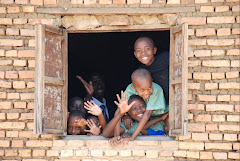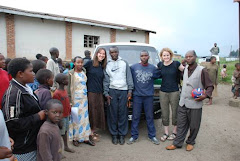Wednesday, June 27, 2007
Nyamata Memorial Visits
Juxtaposed to the memorial sites, we visited a couple different development project sites. The first was near-and-dear to my heart. It was a NGO and government sponsored project to help fight poverty and malnutrition by building sustainable stoves. The stoves were made out of a creative mixture of sand and mud that with a limited amount of heat could stay warm for hours. This project has supplied people with jobs, clean boiled water, and they use about ¾ less firewood which is a benefit to the environment and also to the women and girls who have to go far distances to collect firewood. Now, instead of collecting wood, the girls are able to go to school! Some of the villages nearby have received large stoves in the school so that the children are able to receive sustenance during the school day. Amazing huh! When asked how the stove project has helped to create peace and reconciliation, the villagers responded that making the stoves has pulled them together and has given them hope for the future. Their children study together and are growing into a collaborative existence.
Sunday, June 24, 2007
A Portrait of Kigali, Rwanda
In the furry of my thoughts, in the previous entry I failed to introduce you to my temporary home so welcome to Rwanda!
Sitting and watching the street activity has given me one of the most poignant summaries of the country, its history, prospects for the future, and of Rwandan living. The city streets weave around lush, green, hilly country side. The cool climate and green beauty has surprised and impressed me almost as much as the beauty of the people.
I don’t always feel welcome though. As I walk down the streets I am greeted by calls of mozungo-white person. The first time I heard this title used I was out for an early morning walk. I hung my shoulders and wanted to pull my black jacket up over my face. I felt targeted, uncomfortable, and like an invader. Accenting physical differences to create separation/segregation is painful. In that moment of personal discomfort I experienced the years of pain and segregation that the Rwandan people have carried. As I turned to find my caller I spotted an elderly man grinning with a toothless smile and waving energetically; my pain was self-imposed. Since then I have been hollered at countless times. Sometimes in a friendly/curious manner and sometimes it is yelled from behind a frown and stern eyes. The white skin of German, French, and





